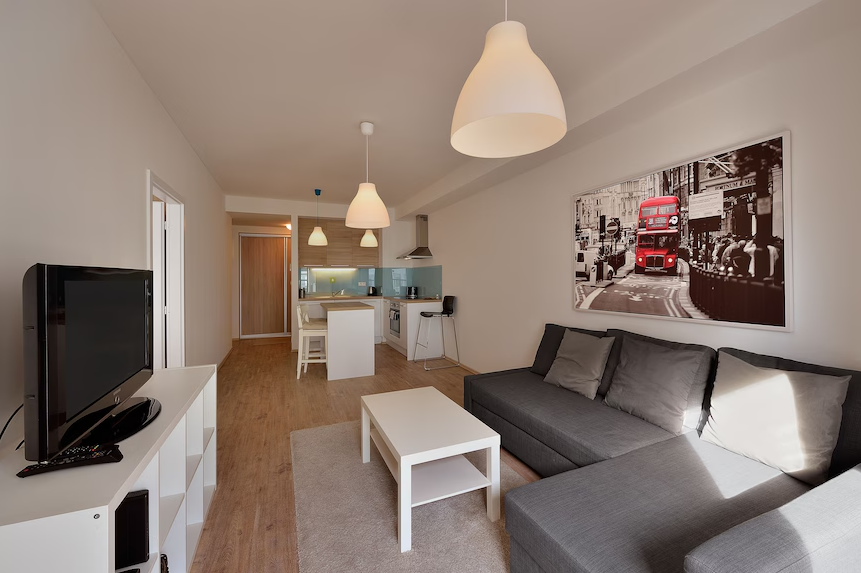Whether you’re renting an apartment for the first time or have previous experience, the process is generally similar across countries. Here’s a simple and practical apartment rental guide to help you find the right home and avoid common pitfalls.
1. Define Your Rental Needs
Before you start searching for an apartment, it’s essential to define your requirements:
- Budget: Decide how much you can afford to pay for rent each month. As a general rule, rent should not exceed 30% of your monthly income to maintain financial balance.
- Location: Choose a convenient location that suits your lifestyle. Consider proximity to work, schools, grocery stores, hospitals, and public transportation.
- Apartment Type: Decide on the size of the apartment you need—whether it’s a studio, one-bedroom, or larger. Also, think about whether you need furniture or additional amenities, such as parking spaces or a gym.
2. Search for Apartments Online
Modern technology makes apartment hunting easier. You can use online platforms to find apartments that meet your needs:
- Real Estate Websites & Apps: There are plenty of local real estate websites (such as Zillow, Realtor, Apartments.com) where you can view listings, compare prices, and get details on apartment features and photos.
- Social Media & Rental Groups: Many cities have Facebook groups or local forums where rental listings are posted. Be sure to join relevant groups in your area.
- Compare Options: It’s important to compare different apartments in terms of price, location, size, and amenities to find the best fit.
3. Visit Apartments In-Person
While online listings provide a good starting point, visiting apartments in person is crucial:
- Apartment Condition: Check the apartment’s condition, including appliances, fixtures, plumbing, windows, and doors. Look for any damage that needs to be addressed.
- Neighborhood: Observe the neighborhood’s safety, noise levels, and overall environment. Check if it’s close to essential services like grocery stores, public transport, and schools.
- Talk to Neighbors: If possible, speak with the neighbors to get a sense of the community and living conditions.
4. Understand the Lease Terms
Before signing a lease, it’s essential to understand all the terms:
- Rent and Payment Terms: Confirm the monthly rent amount, payment method, and due date. Also, check if utilities (water, electricity, etc.) or maintenance fees are included in the rent or paid separately.
- Security Deposit: Know the deposit amount and the conditions under which it will be refunded. Typically, the deposit equals one or two months’ rent.
- Lease Duration: Understand the lease start and end dates. Make sure you’re clear on renewal or early termination conditions, if necessary.
- Maintenance Responsibilities: Clarify what the landlord is responsible for repairing and maintaining, and what the tenant is responsible for.
5. Check for Safety and Security
Safety should always be a top priority when choosing an apartment:
- Locks and Security Features: Check that all doors and windows have functional locks. Consider whether the building has added security features like a security system, cameras, or security guards.
- Building Amenities: Ensure the building has necessary safety features, such as fire exits, extinguishers, and emergency alarms.
- Neighborhood Safety: Research the safety of the surrounding area. Check if the area is well-lit and if there have been any reports of crime in the neighborhood.
6. Sign the Lease Agreement
Once you’ve reviewed and agreed to the terms, it’s time to sign the lease. Ensure the lease includes the following details:
- Landlord and Tenant Information: Names, contact details, and addresses of both parties.
- Rent, Deposit, and Lease Term: Clearly state the rent amount, due dates, security deposit, and the start and end dates of the lease.
- Terms and Responsibilities: Include provisions for maintenance, repairs, and any specific responsibilities for both the landlord and tenant.
Make sure you fully understand the lease terms before signing. If you’re unsure about anything, seek clarification from the landlord or legal advice.
7. Final Apartment Inspection Before Moving In
Before moving in, do a final inspection of the apartment:
- Document the Condition: Take note of any existing damage or issues in the apartment (e.g., broken appliances, wall stains) and inform the landlord. This will prevent any confusion when it comes time to move out.
- Check All Facilities: Test appliances, plumbing, heating, and cooling systems to ensure everything works properly.
8. Moving Out and Getting Your Deposit Back
When your lease is up or if you decide to move out, be sure to:
- Clean the Apartment: Clean the apartment thoroughly, leaving it in good condition for the next tenant.
- Notify the Landlord: Inform the landlord well in advance of your move-out date, as specified in the lease agreement.
- Get Your Deposit Back: Make sure the apartment is in the condition outlined in the lease to ensure you receive your full deposit back. If there are damages or cleaning costs, the landlord may deduct them from the deposit.
Conclusion
Renting an apartment can be an overwhelming process, but by following these steps and staying informed about the details of the lease, you can make the process much smoother. Being clear on your needs, understanding the rental terms, and inspecting the property carefully will help you find the perfect apartment and ensure a positive renting experience.




